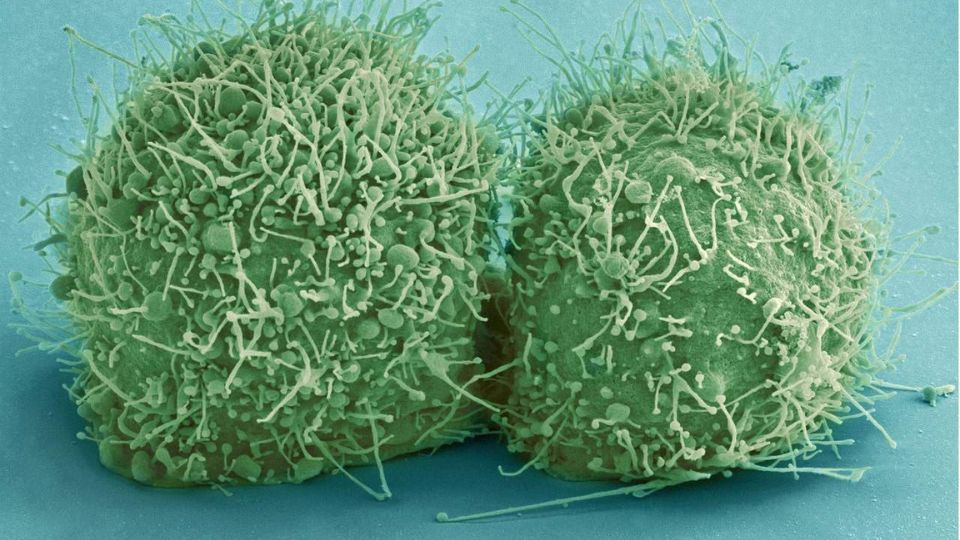Background
After a new investigational drug pre-clinical stage 1 is completed, and a US IND (Investigational New Drug application) or EU CTA (Clinical Trial Application) submission to the FDA or EMA, respectively, is approved, the product sponsor may proceed to clinical trials.
The sponsor should prepare an “investigator brochure”, which organizes information about possible drug effects, for the Institutional Review Boards (IRB) and clinicians who will oversee or participate in the clinical trial. For more information about IND and CMC requirements, refer to the article “New drug development and Regulation from Preclinical to clinical trials”.
For every clinical investigator, an FDA form 1572 should be submitted. Moreover, informed consent (as defined in 21 CFR Part 50), IRB review, approval, and trial reporting (as defined in 21 CFR Part 56) is required.
A clinical study may be conducted only according to the relevant, current, and approved version of the protocol. Changes to the protocol must be controlled, reviewed, and approved by the sponsor. Records should follow good documentation practice (GDP), be managed in a controlled manner, and comply with 21 CFR Part 312 requirements.
Drug Development Process
The new pharmaceutical, biological drug, and drug-device combination product development is a prolonged process that may take 2-15 years and cost USD 1 billion. For more information, refer to the article “New drug development and Regulation from pre-clinical to clinical trials”.
New drug development always presents new adverse events and there will always be risk. The FDA review team will determine whether the drug benefits outweigh its risks for the target population.
New drug development steps:
- Drug/compound discovery
- Preclinical investigations
- IND (Investigational New Drug)
- Clinical trials
- NDA (New Drug Application)
- NDA review
- Drug product marketing
Clinical Trial Phases
Phase 1
Clinical trial Phase 1 of the drug development process is the first time that the investigational drug product is being tested in humans. This phase includes 20-80 healthy volunteers (or severely ill patients).
The study duration is 6-12 months, and the purpose of the study is to assess the safety, toxicity, side effects, ADME, and pharmacokinetics (drug absorption, distribution, metabolism, and extraction) of the investigational new drug, using the chosen route of administration, and to determine potential “drug to drug” interactions.
Phase 1 may include single and multi-dose studies and will enable assessment of the investigational drug product safety profile through a maximal dosage range. Phase 1 of the study will be an “open-label” study that does not include any single/double-blind methodology and is usually managed at a single study center.
Phase 1 should be performed according to GCP (good clinical practice) and GMP (good manufacturing practice) requirements because the investigation new drug is being tested on humans. Quality assurance, documentation, validation, and other GxP standards and requirements should be followed.
Phase 2
General
Phase 2 of the drug development process will follow a successful phase 1 completion. The investigational new drug will be tested in humans and will include 50-300 patients who are ill with the target disease. The study duration is 1-2 years. The study will assess the short-term side effects, risks (safety), and efficacy (dose-response) of the new investigational drug product.
In addition, phase 2 studies will test the chosen drug dosage, based on the dose range that was investigated and determined in phase 1. At the end of phase 2, the sponsor will know whether the investigational new drug product works on patients and, if so, an end-of-phase 2 meeting with FDA can be scheduled.
In phase 2, investigational new drug products are being tested for effectiveness on target disease patients, so these patients may benefit from participating in a clinical trial.
A phase 2 study will be a double-blind study, using positive and/or a placebo control(s), and will also be a multi-center study. Investigational new drug products that will be administered to study patients will be compared with similar patients receiving placebo or other commercial drug products with the same therapeutic indication.
The investigational new drug product’s short-term safety and side effects are monitored and evaluated. Phase 2 studies should be performed according to GCP (good clinical practice) and the drug product used in the trial should be manufactured according to GMP (good manufacturing practice), as the investigational new drug product is being tested on humans.
Quality assurance, documentation, validation, and other GxP standards and requirements should be followed. Hundreds of patients will participate in phase 2 trials, so a scale-up of the pharmaceutical manufacturing GMP process is usually required, in addition to process engineering stages that follow GEP (good engineering practice) and sanitary design considerations.
In some cases, new manufacturing technologies should be considered at this stage. Since phase 2 studies are conducted at multiple sites and locations, supply chain, storage transportation, and shipment validation will be required.
Phase 2A and Phase 2B
There are two types of phase 2 trials:
Phase 2A is a continuation of phase 1, and is performed on healthy volunteers. Phase 2A is a proof of concept/feasibility study.
Phase 2B is a controlled study performed on target disease patients.
After completion of phase 2, the product sponsor should meet the FDA to discuss the investigational new drug product pivotal trial(s) to assess how large-scale phase 3 studies should be performed.
Phase 3
General
Phase 3 of a drug development process follows the successful completion of phase 2, in which significant efficacy of the investigational new drug product has been demonstrated. The purpose of phase 3 studies is to provide statistically significant evidence of the efficacy and safety of the investigational new drug product.
In phase 3, the investigational drug product is being tested in humans and will include hundreds or thousands of target disease-ill patients. Phase 3 study’s estimated duration is 2-3 years. The study will assess the investigational drug product safety and efficacy.
A phase 3 study evaluates the selected investigational new drug formulation and the basic information for labeling and package inserts for physicians and patients. Phase 3 includes 2-4 pivotal studies to prove the safety and efficacy of the study’s primary endpoints.
Phase 3 studies are double-blind studies using positive and/or placebo control(s) and are multi-center studies. Phase 3 studies compare the investigational new drug product to other commercial drug products with a similar therapeutic indication.
Phase 3 study populations will be similar to the future (commercial) drug target patient population and will demonstrate that the potential benefits of the use of the drug outweigh its risks, and will optimize drug dosing and treatment schedules based on additional data that will be analyzed during the study.
Relevant information will be written in the new biological/pharmaceutical product package insert. Compared to phase 2, in phase 3 studies the investigational new drug product is given for a longer period of time.
Phase 3 includes adequate and well-controlled studies which include:
- Different doses and dosing regimens
- Use and performance at different stages of the disease
- Use in various populations
- Termination at different endpoints
Phase 3 should be performed according to GCP (good clinical practice) and the drug product used in the trial should be manufactured according to GMP (good manufacturing practice), as the investigational new drug product is being tested on humans.
Quality assurance, good documentation practice, validation, and other GxP standards and requirements should be strictly followed.
Since thousands of patients in multiple sites participate in phase 3 trials, so another scale-up of the pharmaceutical manufacturing GMP process may be required and as well as process engineering stages that follow GEP (good engineering practice) and sanitary design considerations. Supply chain, storage, transportation, and shipping validations are mandatory.
Phase 3 studies collect primary data to support the NDA (New Drug Application) submission to FDA and are pivotal in the process of obtaining marketing authorization approval for the new drug product.
Phase 3A and Phase 3B
There are two types of phase 3 studies, Phase 3A and Phase 3B.
In phase 3B (sometimes known as phase 4) clinical studies, additional indications or aspects of the new drug product may be investigated and tested. Sometimes, product label information will need to be changed or updated per FDA demand, as more information on the product efficacy and side effects accumulate and become known.
Phase 3B can be a post-approval (postmarket) study or as a condition for drug approval. Phase 3B may include studies to evaluate the study drug compared to a commercial competitor/comparator product, postmarketing surveillance for safety, use in special populations, increased rates of adverse events, long-term usage data, quality of life indices, etc
Clinical Trials and Clinical Investigations
Informed consent should be obtained from study participants and submitted according to 21 CFR Part 50 to confirm that volunteers’ participation is truly voluntary and to verify proper disclosure of risks, potential benefits, and other alternatives to study subjects.
The IRB (Institutional Review Board) of the center(s) where the study is to be conducted will review and monitor the study in order to protect the subjects participating in the clinical trial.
Clinical investigations should follow FDA 21 CFR Part 312.32 and 21 CFR Part 12 subpart B, which detail how sponsors should report adverse effects/events, how they should control, distribute and return investigational drug products, and how to assure sponsor investigations are done according to proper protocols, and according to appropriate documentation and implementation practices.
After the clinical trial is completed, the results are collected and analyzed. Afterward, the sponsor will submit all relevant data to the relevant FDA center in a New Drug Application (NDA) or a Biologics License Application (BLA), including the whole history of the investigational drug product studies and the results.
Data will include all relevant data from animal studies, human studies manufacturing, and labeling data. Within 60 days, the FDA will respond to the sponsor to notify if the NDA (or BLA) is accepted for review. The FDA will, in the course of its review, determine if the drug will be approved.
For accelerated approval drugs, detailed in the next section, FDA review will take up to 6 months. The application’s final destination for review at CDER is determined based on the therapeutic indication of the investigational new drug product. The application will be assigned to the relevant drug product division in CDER (ODEs I, II, III, IV, V, VII).
Before CDER applies its scientific and technical expertise to review the application, it will decide the type of application review that determines the review process timelines:
The standard review is for drugs that appear to have therapeutic qualities similar to those already marketed.
Priority review is for drugs that appear to have an advantage over available therapy if any exists.
Investigational Drug Accelerated Approval
When no treatment already exists for the treatment of a life-threatening disease, new drugs for that indication considered to have “exceptional promise” may receive accelerated (priority) review and approval, or be eligible for CDER or CBER early access programs.
The purpose of the accelerated approval route is to speed up the approval process of promising therapies, so they can reach the market as fast as possible.
CDER/CBER review and determination for product safety and effectiveness will be based on “surrogate endpoints”. Surrogate endpoints can be indirect laboratory findings or physical signs that are predictive of an investigational drug’s therapeutic benefit.
NDA
What is an NDA?
An NDA (New Drug Application) is the formal mechanism for requesting approval to market a drug product in the US. It includes preclinical and clinical results, in addition to manufacturing and labeling information. Pre-NDA meetings may be scheduled close to phase 3 data analysis and clinical conclusions are presented in the NDA submission.
As mentioned in previous sections, an FDA NDA includes all information related to the drug product and its development process.
The information below will be detailed in the NDA:
- Drug product and drug substance description and characteristics
- Animal and preclinical studies data
- Pharmacology and toxicology data
- Human pharmacokinetic and bioavailability data
- Human Studies and clinical data on Safety
- (At least) two well-controlled and appropriate efficacy human studies and supportive evidence data
- Statistical analysis
- Pediatric data
- CMC (chemistry, manufacturing, and controls) data
- Proposed manufacturing technologies and methods, safeguards, quality assurance (QA), and good manufacturing practice (GMP)
- Proposed (draft) labeling
- Case reports and data
- Patent information; in case of exclusivity, approval will not be delayed by patent or exclusivity rights of other drugs
- Debarment certification
- Clinical investigator financial disclosure forms
The NDA will be prepared based on 21 CFR 314.101(A).
FDA refusal
An FDA Refusal To File (RTF) NDA may be issued in cases of:
- Incomplete application
- Application submission in an improper format
- Omission of clinical data
- No statement that preclinical studies were performed according to GLP (Good Laboratory Practice)
- No statement that clinical studies included proper informed consent and followed IRB requirements
- an investigational drug is already covered by another application submitted to the FDA
NDA review team
The NDA review team is responsible for drug approval decisions and it determines whether the studies completed were controlled and provide substantial evidence of effectiveness, and if the product is safe under the conditions of use described on the product label.
The NDA review team is composed of the following staff members:
- Project manager
- Medical officer, a physician who will evaluate clinical test data and adverse effects/events
- Chemist, who will evaluate the methods of manufacturing controls, stability, and packaging to assure the chemical compound is stable and reproducible
- Microbiologist, who will evaluate the microbial results and content and their effect on patients
- Statistician, who will evaluate study design and the validity of the statistical analysis to determine the solidity of the findings and to assure findings can be extrapolated to the patient population
- Pharmacologist, who will evaluate animal trials results
- Establishment/facility reviewer
- Support personnel as needed
NDA approval
CDER/CBER approval after NDA review can be granted in one of the following ways:
- Approval letter – No need for a response from the sponsor
- Approval letter with minor deficiencies – Requires a response within 10 days from the sponsor
- Non-approval letter (complete response letter) – Letter from FDA listing major deficiencies; requires a response within 10 days from sponsor to amend or withdraw the NDA, or to request a hearing.
NDA disapproval
NDA disapproval can result from the following:
- Inadequate testing
- Inadequate manufacturing and controls, manufacturing process not compliant with cGMP (current good manufacturing practice)
- Insufficient safety evidence
- Inadequate efficacy data
- Misleading label information
- False statements
(Scientific) Advisory Board
An FDA advisory board is a panel that includes external scientific experts and consults with the FDA review team. Sometimes, per FDA or sponsor request, an advisory board will review the investigational new drug product data. This outside advice exists to allow the FDA to benefit from wider national expert input.
Advisory boards may include physicians, statisticians, pharmacologists, epidemiologists, and at least one representative from the public who will represent the client or patient perspective and will raise customer concerns that might not be addressed otherwise prior to product marketing.
There are open, public meetings that give the public the opportunity to access information about trends in healthcare and raise public awareness of new public health issues. CDER/CBER usually agree with advisory board recommendations, but CBER/CDER is not committed to or required to abide by them.
Supplemental New Drug Applications (sNDA)
Supplemental New Drug Applications (sNDA) can be submitted in the following situations:
- Drug label changes
- New doses of the drug
- New strengths of the drug
- The new manufacturing process(es) for the drug
The CDER and CBER Office of Compliance is responsible for determining labeling, manufacturing, and testing standards, monitoring marketed drug quality, and evaluating, classifying, and recommending drug recalls and market withdrawals.
Postmarketing Surveillance
The Office of Drug Safety (ODS) is responsible for drug safety after approval, safety information retrieval and adverse event reporting for drug and biological products, medical devices, and dietary supplements. This information can be reported to and viewed on the FDA MedWatch website.
Adverse effects can be electronically reported via the Adverse Events Reporting System (AERS). AERS includes international database information. The ODS uses AERS to triage, review and assess the risks of marketed drugs. When postmarket drug safety problems are discovered, the following regulatory actions may be required:
- Labeling changes
- Scientific publications
- Physicians’ specific warning letters
- Restricted use
- Restricted distribution
- Patient medication guide
- Product Withdrawal







